Posts Tagged ‘propecia’
Tuesday, February 21st, 2012
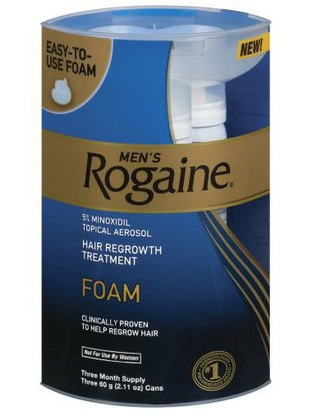 We receive a lot of questions at US Hair Restoration about the use of Minoxidil (Rogaine), and how it affects hair growth after a hair transplant procedure. There are mixed reviews people find on the internet through different websites and blogs about the Foam version of Rogaine. Some say it helps hair growth, others say it hinders, while some claim it does absolutely nothing. We receive a lot of questions at US Hair Restoration about the use of Minoxidil (Rogaine), and how it affects hair growth after a hair transplant procedure. There are mixed reviews people find on the internet through different websites and blogs about the Foam version of Rogaine. Some say it helps hair growth, others say it hinders, while some claim it does absolutely nothing.
Minoxidil (Rogaine) may be used after a hair transplantation on the newly transplanted area, for protecting the already existing hairs which are genetically predisposed to thinning. The hair grafts which are actually transplanted from the donor area require no medication for growth and maintain a permanent residence in the balding area. Those are the healthy hairs which are not affected by the hormone DHT (Dehydrotestosterone) which causes thinning and baldness.
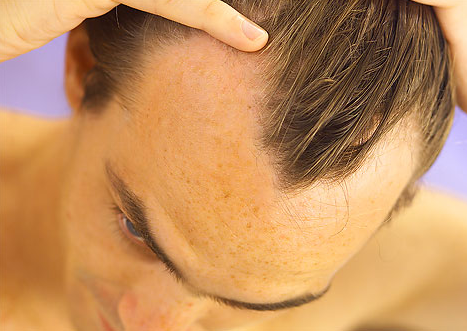 There may be some loss of existing native hair in the balding area due to shock loss, and for this we recommend Propecia for male patients to protect against. Propecia is proven to work better then Rogaine for the prevention of shock loss in men, and continues to have remarkable results in the patients who use the medication as directed. Unfortunately it does not work on women, but in these cases Rogaine does work and is a recommend option for the first few months after hair restoration surgery. There may be some loss of existing native hair in the balding area due to shock loss, and for this we recommend Propecia for male patients to protect against. Propecia is proven to work better then Rogaine for the prevention of shock loss in men, and continues to have remarkable results in the patients who use the medication as directed. Unfortunately it does not work on women, but in these cases Rogaine does work and is a recommend option for the first few months after hair restoration surgery.
Tags: female hair loss, finasteride, Male Hair Loss, minoxidil, propecia, rogaine, shock loss
Posted in after hair transplant, hair loss complications, hair loss medication, men hair restoration, women hair loss | No Comments »
Friday, October 21st, 2011
 Hair loss and hair thinning is a result of testosterone formed in different areas like the prostate gland or hair follicles, which is converted to Dihydrotestosterone (DHT) in the scalp area. Hair follicles prone to genetic male patterned baldness contain DHT receptors, thus thinning hair and loss of hair can result. Over time men produce an abundance of DHT and the molecules affect their hair follicles and cause a decrease in size and eventually see their natural hair fall out permanently. Because of this common occurrence, hair loss in men is frequent. Hair loss and hair thinning is a result of testosterone formed in different areas like the prostate gland or hair follicles, which is converted to Dihydrotestosterone (DHT) in the scalp area. Hair follicles prone to genetic male patterned baldness contain DHT receptors, thus thinning hair and loss of hair can result. Over time men produce an abundance of DHT and the molecules affect their hair follicles and cause a decrease in size and eventually see their natural hair fall out permanently. Because of this common occurrence, hair loss in men is frequent.
DHT and hair loss from having the gene for male pattern baldness are the most common factors for male pattern baldness. Women suffering from female-pattern baldness, unlike their counterparts with male-pattern baldness, are not usually characterized by higher production rates of DHT from lower levels of testosterone. On the other hand, if for a number of possible reasons, a woman has increased testosterone, she can develop female patterned baldness like a man does through the same mechanism.
Hair in the prone areas to male patterned baldness: Corners, top, and crown are filled with DHT receptors in men who suffer Androgenic Alopecia The hair on donor areas such as back and sides, however, have fewer DHT receptors. This is precisely why hair is more permanent on the sides and back and not the top and front.
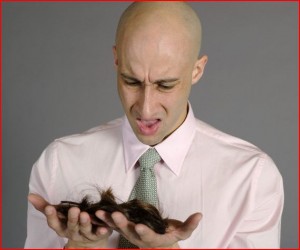
The distinction in the hair quality of different areas, such as the donor and recipient areas, allows for hair loss surgeons to remove the hair from one area and transplant it to the bald portions of the scalp. These newly transplanted hairs are permanent and immune to DHT. Finasteride (Propecia) is a drug which blocks the conversion of testosterone to DHT as a result of it blocking the enzyme alpha reductase. The amount of DHT in hair loss patients decrease when they are on Propecia and this helps to maintain healthy hair, and also helps some of the miniaturized hair become stronger.
We at US Hair Restoration often recommend medical treatment with DHT blockers in many of our patients who undergo a hair transplantation procedure in order to help maintain their own hair in addition to the newly restored, formerly balding areas because of a hair restoration surgery.
Tags: androgenetic alopecia, dht, DHT blockers, DHT receptors, dihydrotestosterone, female patterned baldness, finasteride, hair restoration surgery, propecia, testosteron
Posted in hair loss complications, Hair Loss Conditions, hair transplant, men hair restoration, women hair loss | No Comments »
Tuesday, November 30th, 2010
Q:
Good Afternoon Dr. Mohebi,
I recently was recommended to go on a medication for body building purposes by my trainer. The medication that I am planning on starting is called ANAVAR (an anabolic steroid). Because I am currently taking Propecia, as prescribed by you, I just wanted run ANAVAR by you to make sure it would be OK to take in conjuction with Propecia.
I appreciate all of your help, Thanks!
A:
Anavar (oxandrolone) is a weak androgen and is considered an anabolic steroid. It is indicated as adjunctive therapy to enhance weight gain after weight loss due to an extensive surgery, infectious disease, trauma and so on. Anavar has also been prescribed to some patients who for no reason fail to gain weight despite of  proper nutrition and work out schedules. It may also be used to maintain normal weight or to prevent the catabolism due to prolonged administration of corticosteroids. proper nutrition and work out schedules. It may also be used to maintain normal weight or to prevent the catabolism due to prolonged administration of corticosteroids.
There have been some online reports of hair loss with Anavar’s use and some exagerated hair loss reports in patients who take both Propecia (finasteride) and Anavar (oxandrolone) in conjunction. Although my personal searches in medical publications have never revealed any studies supporting this information, reports can be found online by its claimed users.
Overall, my general recommendation is: unless there is a strong medical indication for its use, people with any evidence of male patterned baldness should stay away from anabolic steroids. Although you may find some anabolic steroids over the counter, your family doctor should always be involved and aware of any anabolic steroids that you take as part of your body enhancing plan.
Tags: anabolic steriods and hair loss, Anavar, finasteride, hair loss, oxandrolone, propecia
Posted in hair loss complications, hair loss medication, hair loss products, hair transplant, men hair restoration, Uncategorized | No Comments »
Sunday, May 2nd, 2010
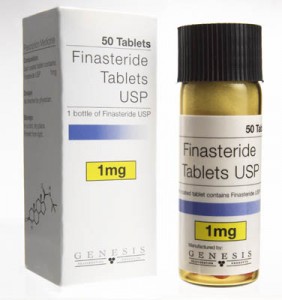 Q: Q:
I started the Propecia at the beginning of March (8 months ago), prior to the procedure last March. Should I still be on it?
A:
It is great to hear from you and I am glad you are happy with the result of your hair transplant. The final result of your hair may still get better up until one full year after your surgery if you allow your hair on the transplanted area to grow longer.
Finasteride as a hair loss medication was mostly prescribed for prevention of shock loss or losing native hair on the balding areas after a hair transplant. You have significant miniaturization on the front, top and crown area (90%-100%), which makes your preexisting hair on balding areas prone to further hair loss. Now that you had your transplanted hair grown, you can decide to stop Propecia. By doing that, you may risk losing your own hair on the balding area further (transplanted hair does not need Propecia for its growth) or you can continue taking the medication to increase the longevity of your preexisting hair on those areas.
Tags: after hair transplant, finasteride, propecia, shock loss
Posted in hair loss medication, hair loss products, hair transplant, men hair restoration | No Comments »
Sunday, June 28th, 2009
Finasteride is the ingredient commonly found in Propecia, a medication used for the treatment of hair loss in men suffering from male pattern baldness. Finasteride is not only used for hair loss. Hair loss prevention is actually the residual side effect of finasteride. The original use of this drug is for prostate enlargement treatment.
Finasteride has been sold under different names and each for a specific cause. Names include Proscar, Propecia, Fincar, Finpecia, Finax, Finast, Finara, Finalo, Prosteride, Gefina, and Finasterid IVAX. Propecia is a 1mg tablet used for hair loss prevention and recommended for hair restoration use by many hair transplant surgeons. It is also the only FDA approved drug for the treatment of hair loss.
Proscar is the original 5mg version of finasteride normally associated with prostate enlargement treatment use. As a cost saving technique, many people purchase 5mg Proscar and cut the tablets into 1.25mg tablets. 1.25mg is a safe dosage but 1mg is more than enough for the treatment of hair loss.
Tags: Finalo, Finara, Finast, Finasterid, Finax, Fincar, Finpecia, Gefina, hair loss treatment, IVAX, prevention of hair loss, propecia, proscar, prostate, Prosteride
Posted in California hair transplant, hair loss medication, hair loss products | No Comments »
Wednesday, May 6th, 2009
A patient from India once wrote to me in regards to preventing male pattern baldness. He is 18 years old and has noticed that his hair is falling very rapidly. He also noted that he fears that his diet might also be playing a role in his hair loss since he finds himself to be too lean. He wants suggestions on how to restore his hair since he doesn’t want to meet with the same fate his father did with his hair.
In most cases hair loss is genetic and, in his case, he seems to be experiencing the early stages of male pattern baldness. Sometimes malnutrition may cause some form of hair loss but that is only experienced in patients whom are severely deficient in some particular elements.
We do recommend that you see a doctor to confirm the diagnosis of the hair loss especially if your hair loss does not follow a typical male pattern. Male pattern type baldness is seen in men as early as their 20′s and will continue to recede or deteriorate for many years. There are many products out on the market claiming to restore hair loss and re-grow hair but none of them have been truly proven. The only exceptions are minoxidil and finasteride and both have been approved by the FDA to be safe to use.
Tags: finasteride, male patterned baldness, Preventing male pattern baldness, propecia
Posted in California hair transplant, hair transplant, Orange County hair transplant | No Comments »
Thursday, February 19th, 2009
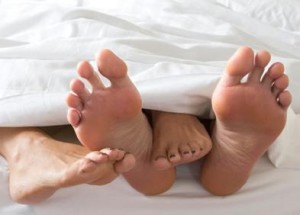 Q: Q:
I am 30 now and I have been losing my hair since I was 18. I started taking finasteride last year and seen great result after taking it for only a few months. I think I may have been experiencing some side effects. The thing is I noticed that it might have affected my erection and it takes me longer to get an erection. I know when you know you are taking a medication that has to do with your male hormone it may automatically affect your sex function negatively. So I do not know whether it is mental or real. I don’t want to stop Propecia if it is safe to continue it.
A:
You have been experiencing erectile dysfunction recently while taking Propecia (finasteride) for a year. Erectile dysfunction has been evaluated in patients who have been taking Propecia. The incidence of erectile dysfunction is reported to be 1.3% of men who were on Propecia for one year.
The rate of erectile dysfunction was reported 0.7% among the patients who only took placebo. You can test this side effect of Propecia by stopping it for at least two weeks and see if you still have erectile dysfunction. If the erectile dysfunction goes away by discontinuing Propecia after two weeks, your problem might be a real side effect of finasteride. If you still want to continue taking Propecia despite experiencing erectile dysfunction, you may try a lower dose that can still help your hair growth without giving you any negative effects to your sexual function.
Tags: balding medical treatment, erectile dysfuction, finasteride, propecia, Propecia side effect, side effects
Posted in hair loss medication, hair loss products, men hair restoration | No Comments »
|
|
 We receive a lot of questions at US Hair Restoration about the use of Minoxidil (Rogaine), and how it affects hair growth after a hair transplant procedure. There are mixed reviews people find on the internet through different websites and blogs about the Foam version of Rogaine. Some say it helps hair growth, others say it hinders, while some claim it does absolutely nothing.
We receive a lot of questions at US Hair Restoration about the use of Minoxidil (Rogaine), and how it affects hair growth after a hair transplant procedure. There are mixed reviews people find on the internet through different websites and blogs about the Foam version of Rogaine. Some say it helps hair growth, others say it hinders, while some claim it does absolutely nothing. There may be some loss of existing native hair in the balding area due to shock loss, and for this we recommend Propecia for male patients to protect against. Propecia is proven to work better then Rogaine for the prevention of shock loss in men, and continues to have remarkable results in the patients who use the medication as directed. Unfortunately it does not work on women, but in these cases Rogaine does work and is a recommend option for the first few months after hair restoration surgery.
There may be some loss of existing native hair in the balding area due to shock loss, and for this we recommend Propecia for male patients to protect against. Propecia is proven to work better then Rogaine for the prevention of shock loss in men, and continues to have remarkable results in the patients who use the medication as directed. Unfortunately it does not work on women, but in these cases Rogaine does work and is a recommend option for the first few months after hair restoration surgery.
 Hair loss and hair thinning is a result of testosterone formed in different areas like the prostate gland or hair follicles, which is converted to Dihydrotestosterone (DHT) in the scalp area. Hair follicles prone to genetic male patterned baldness contain DHT receptors, thus thinning hair and loss of hair can result. Over time men produce an abundance of DHT and the molecules affect their hair follicles and cause a decrease in size and eventually see their natural hair fall out permanently. Because of this common occurrence, hair loss in men is frequent.
Hair loss and hair thinning is a result of testosterone formed in different areas like the prostate gland or hair follicles, which is converted to Dihydrotestosterone (DHT) in the scalp area. Hair follicles prone to genetic male patterned baldness contain DHT receptors, thus thinning hair and loss of hair can result. Over time men produce an abundance of DHT and the molecules affect their hair follicles and cause a decrease in size and eventually see their natural hair fall out permanently. Because of this common occurrence, hair loss in men is frequent.
 proper nutrition and work out schedules. It may also be used to maintain normal weight or to prevent the catabolism due to prolonged administration of corticosteroids.
proper nutrition and work out schedules. It may also be used to maintain normal weight or to prevent the catabolism due to prolonged administration of corticosteroids.
